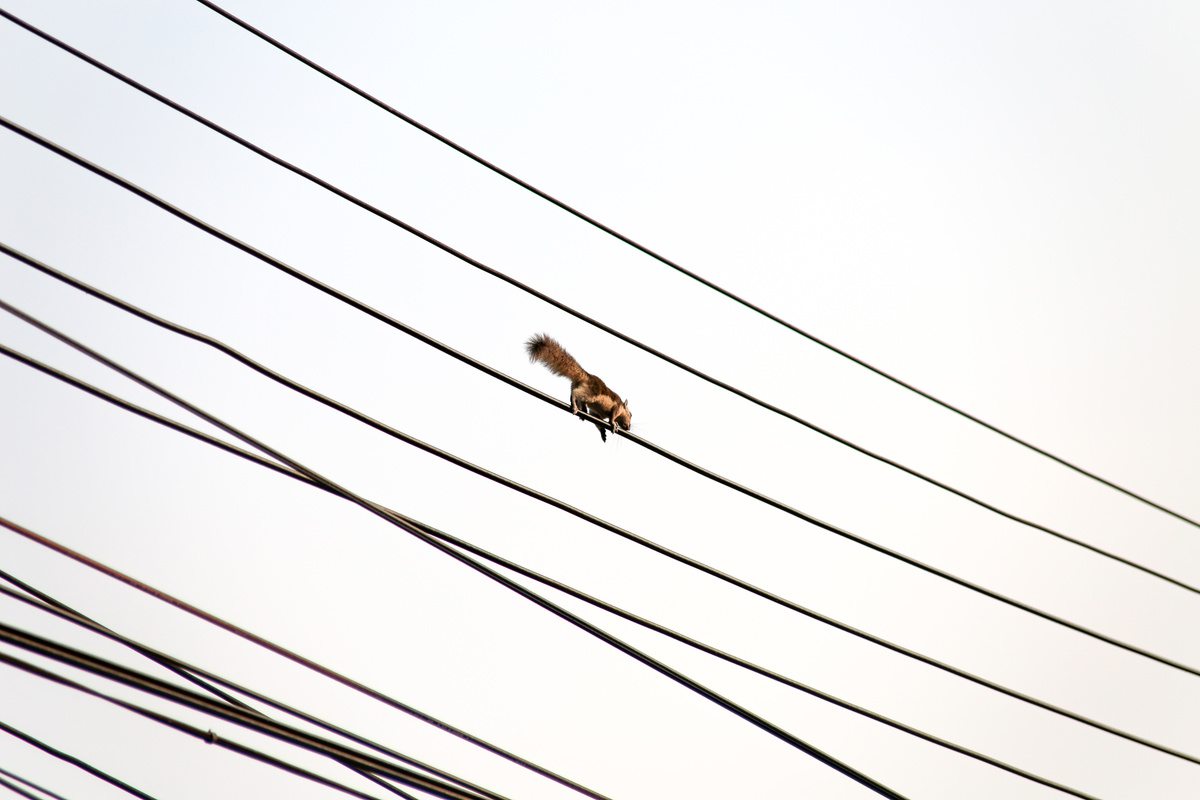3 Ways Squirrels Get Onto Power Lines

Squirrels are adept climbers and can jump from one tree or power line to another without falling. They love perching on power lines and usually use them as the most efficient and quickest medium to get around.
Like other rodents, squirrels can chew electrical wiring and remove the insulation from the cables, especially if they get into your attic, leading to potential fire and electrocution hazards. To prevent squirrels from using power lines to get to your roof and attic, it’s important to understand how squirrels get onto power lines in the first place.
How Do Squirrels Get On Power Lines?
Squirrels often access power lines by jumping from nearby trees, scaling utility poles, or from the roof of the house, especially through the service drop, an overhead power connection from the main line to your home.
1. Jumping from Nearby Trees
Squirrels can scurry up trees and jump or use the overhanging branches to get on the power lines. You can trim tree branches near power lines to prevent them from traversing and causing problems to your line.
2. Scaling Utility Poles
These furry rodents are known for their excellent ability to scale anything, and utility poles are no exemption. They use their flexible tails and strong claws to grip poles and easily travel along the lines. To help prevent squirrels from scaling utility poles and accessing the power lines, try Critter Guard’s Pole Guard product.
3. Jumping from Roofs
Squirrels can get on roofs from power lines and vice versa, especially if the lines are close to the roof. They can also get on the power lines through service drops and other routes with less resistance.
Protect Your Power Lines with Critter Guard
Animals, especially rodents and birds, are significant causes of power outages across the world. Squirrels can chew, short, or damage pole-mounted power equipment like switches or transformers, which causes blackouts and outages across the area.
At Critter Guard, our Line Guard and Pole Guard products are designed to prevent squirrels, rats, and other animals from accessing and damaging your power equipment. To learn more about our wildlife control solutions, contact us today!
- Choosing a selection results in a full page refresh.


